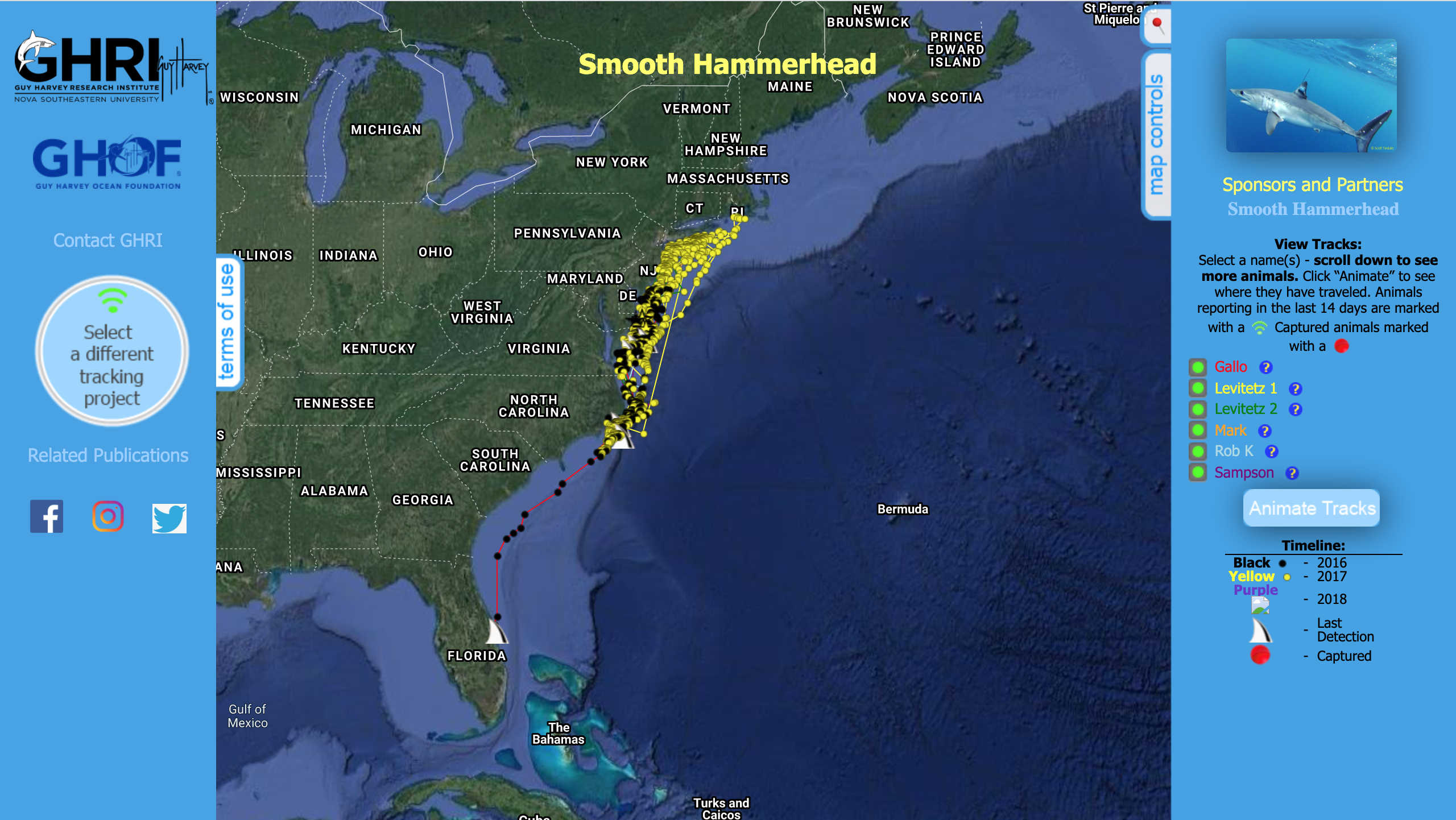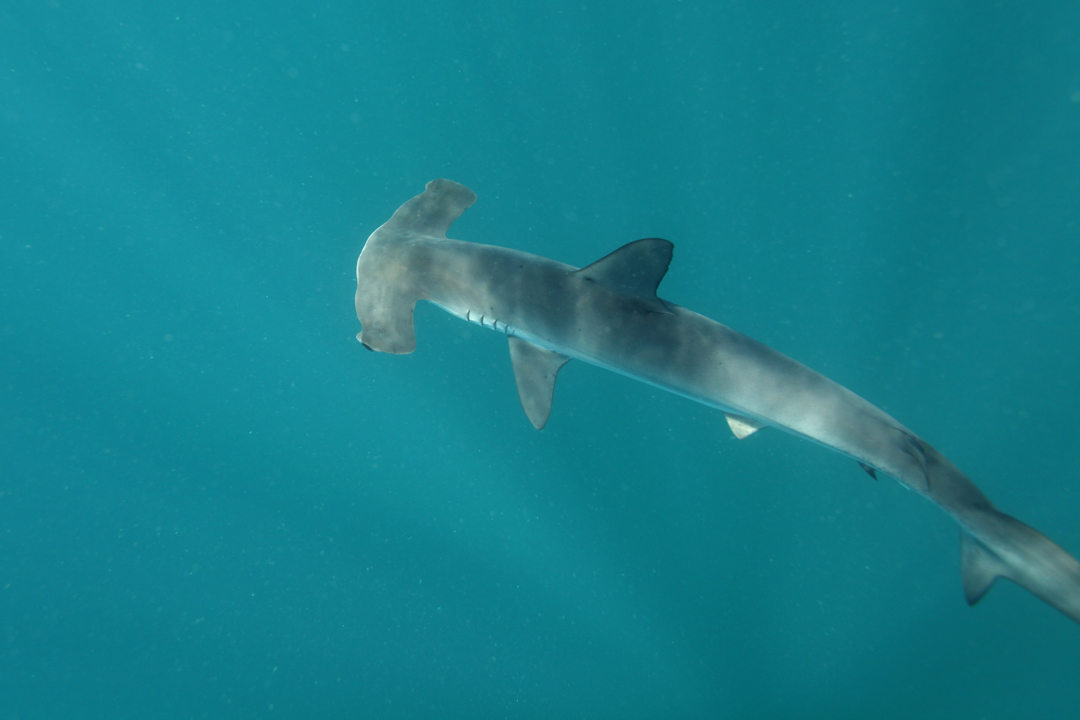Hammering home
A window into the elusive smooth hammerhead shark’s world has been opened. Up until now very little was known about this vulnerable species, but thanks to the work of a multinational team of researchers, we now have valuable insight into the migration patterns of these majestic ocean travellers.
Even though they’re one of the most recognised sharks on the planet, the knowledge needed to adequately aid conservation efforts has been hard to come by. Notoriously difficult to find and track, smooth hammerheads have seen a steady decline over the past two decades due to over-fishing and their slow rates of population growth. Not knowing where they spend their time has put a strain on scientists trying to gather the data needed to protect the species.
A team from The Save Our Seas Foundation Shark Research Center (SOSF-SRC), the Guy Harvey Research Institute (GHRI), Fisher Finder Adventures, the University of Rhode Island and the University of Oxford were able to satellite tag 6 juvenile smooth hammerhead sharks and spent up to 15 months monitoring their movements across the Western Atlantic Ocean.
‘This study provides the first high resolution, long term view of the movement behaviours and habitats used by smooth hammerhead sharks – key information for targeting specific areas and times for management action to help build back this depleted species.’ – Ryan Logan, Ph. D. student at the SOSF-SRC and GHRI.
What researchers found was that the sharks travelled seasonally, migrating between the coastal waters of New York and North Carolina, coinciding with warmer surface waters and areas of high productivity (food-rich).
‘The high-resolution movements data showed these focused wintering and summering habitats off North Carolina and New York, respectively, to be prime ocean ‘real estate’ for these sharks and therefore important areas to protect for the survival of these near endangered animals,’ said Mahmood Shivji, Ph. D.(Director of SOSF SRC and GHRI, who oversaw the study)

Smooth hammerhead tracks on the Guy Harvey Research Institute website. Image © Guy Harvey Research Institute
The hopes are that the evidence of high residency areas for the species will result in the territory’s being declared ‘Essential Fish Habitat’s’. Defined in the 1996 amendments to the Magnuson- Stevens Act as ‘those waters and substrate necessary to fish for spawning, breeding, feeding or growth to maturity’. If formally declared such a zone, special limitations could be placed on fishing practices resulting in a lower mortality rate among smooth hammerhead sharks.
‘It’s particularly gratifying to see such basic research not only improving our understanding of animal behaviour in nature but also illuminating pathways for recovery of species and populations that have been over-exploited so we can try and get back to a balanced ocean ecosystem,’
- Dr Shivji.
The tracking data also revealed that smooth hammerheads spent a lot of resident time in an area known as the Mid-Atlantic Shark Area (MASA). A territory that is closed for fishing seven months of the year (January 1- July 31) in order to protect a fellow endangered species, the dusky shark. The hammerheads however showed up earlier in December while commercial bottom longline fishing was still in operation.
‘Extending the closure of the MASA zone by just one month, starting on December 1 each year, could reduce the fishing mortality of juvenile smooth hammerheads even more’, said Shivji.
You can follow the smooth hammerheads tracks online at www.ghritracking.org and read the full research paper Seasonal Movements and Habitat Use of Juvenile Smooth Hammerhead Sharks in the Western North Atlantic Ocean and Significance for Management. Frontiers in Marine Science. here.

